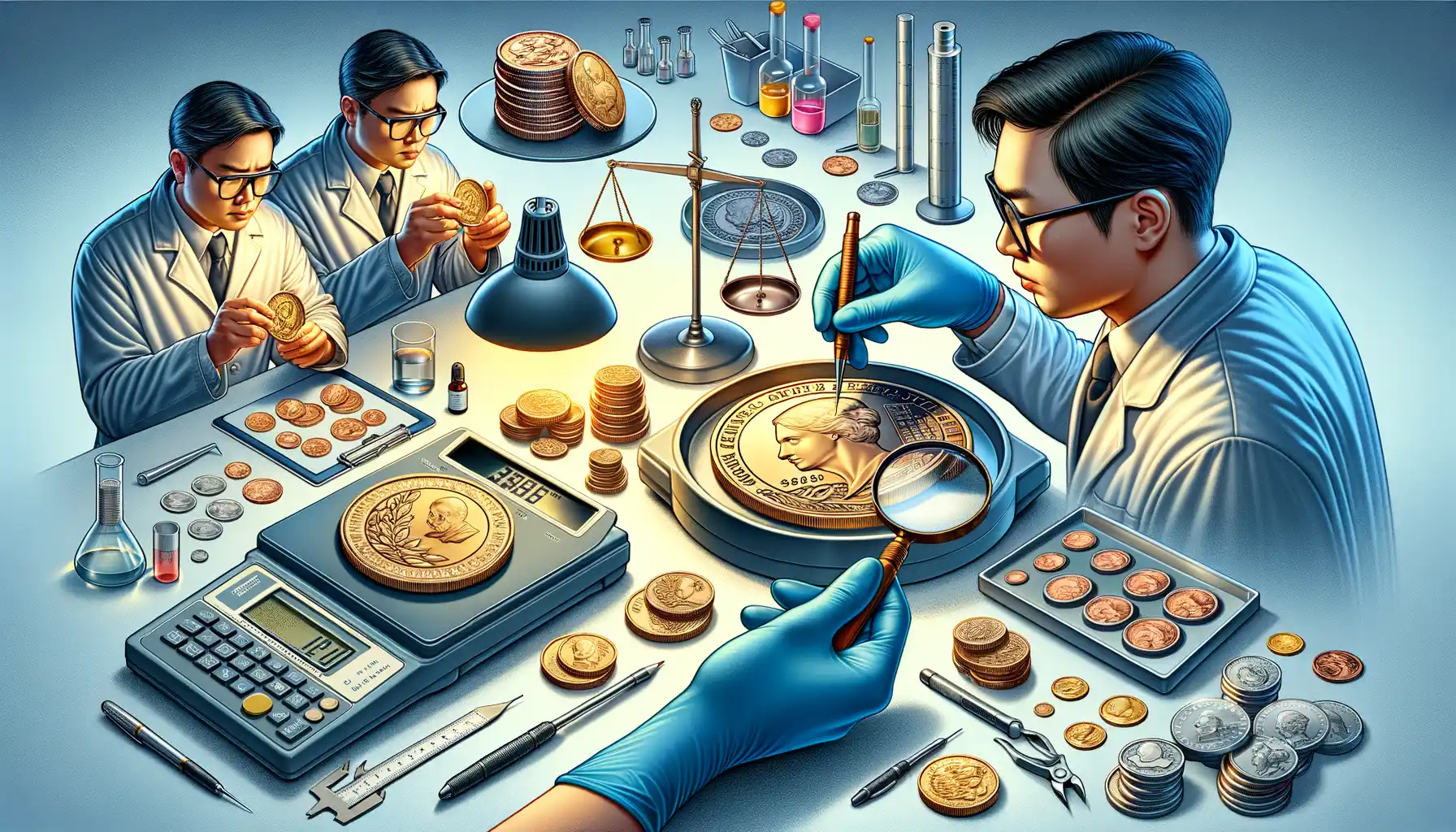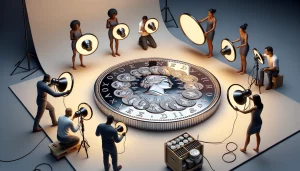Understanding Coin Counterfeiting
Why Counterfeit Coins Are a Collector’s Worst Nightmare
Imagine holding what you believe to be a rare, centuries-old coin in your hand—a piece of history forged in fire, touched by countless lives, and now, yours. But what if that treasure is a fraud? Counterfeiting has plagued coin collectors for as long as coins have existed. It’s not just a modern issue; it’s a battle rooted in history, with some ancient counterfeiters producing fake coins so convincing that they fooled even the most discerning eyes of their eras.
Today’s counterfeiters operate with frightening precision, using advanced techniques that can leave even experienced collectors second-guessing themselves. So, why does this happen? Simple: the allure of money and rarity. High-value coins carry immense temptation for counterfeiters, especially icons like the 1909-S V.D.B. Lincoln penny or the 1794 Flowing Hair silver dollar. The stakes are high in this world, and losing out to a fake isn’t just a financial blow—it’s an emotional one.
- Some fakes are crafted from base metals but plated with precious ones—sneaky yet effective.
- Others mimic patina or wear, attempting to mirror the natural passage of time.
Be ready to dig deeper than surface appearances. The real story of a coin often lies in the tiniest details counterfeiters hope you’ll overlook.
Key Characteristics of Authentic Coins

Spotting the Magic: Details That Signal Authenticity
Imagine holding a coin that feels almost alive in your hand—weighty, textured, and rich with history. Authentic coins carry traits that make them stand out, much like a fingerprint. First, there’s the weight. Genuine coins have precise mass and density, consistent with their materials. If it feels too light or oddly heavy, trust your instincts—something might be off.
The edge of a legitimate coin is another tell. Run your fingers along the rim. Are the grooves sharp and evenly spaced? Many counterfeiters skimp on this detail, leaving edges too smooth or irregular. The same goes for the coin’s surface—it should boast finely engraved designs and crisp details. Blurrier images or lackluster artistry? A red flag.
- Date and Mint Mark Accuracy: Pay attention to these details. Misaligned or non-existent mint marks can scream “fake.”
- Material Composition: Authentic coins shine (and tarnish!) in ways only genuine metals can. Look for luster or natural patina. Beware of anything overly shiny—it’s trying too hard.
Authentic coins tell a story—they show subtle signs of age, like genuine wear from years of circulation. Counterfeits? They often look too new or too uniform, as if they were born yesterday. Trust your eyes, your hands, and a little bit of skepticism.
Common Methods for Detecting Counterfeit Coins

Quick Visual Checks That Speak Volumes
Sometimes, your eyes can be your best allies. A counterfeit coin may look convincing at first glance, but subtle details often give it away. Take a closer look at the coin’s design—are the edges crisp and well-defined? Does the artwork match the quality of similar known genuine coins? Counterfeiters often struggle to replicate fine details, which can result in blurry or uneven lines.
Another dead giveaway? The patina or surface finish. Authentic coins, especially older ones, develop a natural oxidation layer that is tough to fake. If a coin’s shine looks a bit too glitzy or freshly minted for its supposed age, your instincts might be on point. Don’t underestimate the power of simply *feeling* the coin either. Genuine coins often feel sturdier and have more heft due to proper materials; fakes may feel lighter or “off.”
- Edge details: Check for clean, uniform ridges or lettering.
- Engravings: Compare fonts and spacing with authenticated images.
- Coloring: Watch for unnatural hues or overly polished finishes.
Sound & Weight: Coins That “Talk”
Did you know coins have their own kind of music? A quick “ping test” can reveal a lot. Tap the coin lightly against a known authentic coin and listen carefully. Genuine coins made from precious metals often produce a clear, ringing tone, while counterfeits might sound dull or muted.
Weight is equally revealing. Use a precision scale to measure the coin’s weight down to the gram. A true silver dollar, for instance, should weigh about 26.73 grams. Anything noticeably lighter or heavier? That’s a red flag. What’s fascinating is how the tiniest difference can tell such a big story.
Tools and Techniques for Coin Authentication

Your Innovation Allies: Tools of the Trade
Ever feel like a sleuth when examining coins? Well, that’s because you are! The art of coin authentication calls for sharp eyes and some trusty tools by your side. Let’s start with the basics: a high-quality loupe or magnifying glass. This isn’t just any magnifier—opt for one with 10x power to reveal the tiniest details, like the texture of the coin’s surface or minuscule mint marks.
Then there’s the mighty digital scale. Authentic coins have precise weights, and even a fraction of a gram off could mean trouble. Pair this with a caliper to measure a coin’s thickness and diameter. Together, they’re like peanut butter and jelly—unstoppable in catching inconsistencies.
The Science Behind the Shine
Advanced tools? Oh, they take it to a whole new level! A magnet is small yet mighty for detecting ferromagnetic counterfeits—one quick swipe, and you might save hundreds of dollars. For serious collectors, consider investing in an XRF (X-ray fluorescence) analyzer. It sounds fancy, but it unveils the coin’s elemental composition with scary accuracy.
If tech isn’t your style, remember these classics:
- UV light for spotting hidden ink or tampering marks.
- Sound tests—yes, counterfeit coins often sing an off-key note when dropped!
Investing in these tools isn’t just smart; it’s empowering. Like holding the secret password to exposing the fakes!
Tips for Collectors to Avoid Purchasing Fakes

Sharpen Your Collector’s Instincts
Picture this: You’re holding a coin that could complete your prized collection. The weight feels right, the shine catches the light just so… but how can you be sure it isn’t hiding a counterfeit story? Trusting your gut is crucial, but a little extra vigilance can save you from heartbreak.
Here are some tried-and-true tips to sidestep fakes:
- Buy from reputable dealers or auction houses: If you’re dealing with someone who seems as slippery as a freshly minted penny, think twice. Provenance matters!
- Compare prices: If a deal seems too sweet, it might leave a bitter taste later. Research the typical market value of the coin before opening your wallet.
- Ask for certification: Coins graded by trusted organizations like PCGS or NGC come with an added layer of authenticity.
Watch Out for These Red Flags
Some counterfeits look polished, but their flaws give them away. Watch for weak or inconsistent details in the design—genuine coins are sharp, not sloppy. Does the color seem off? For instance, a gold coin with an unusual orangey tint might be screaming “fake!” And don’t overlook edges; poorly struck rims can be a dead giveaway.
Above all, remember: even experts occasionally stumble. When in doubt, call in reinforcements—a professional numismatist can make all the difference. Keep your eyes open and your precision sharper than a mint die!












